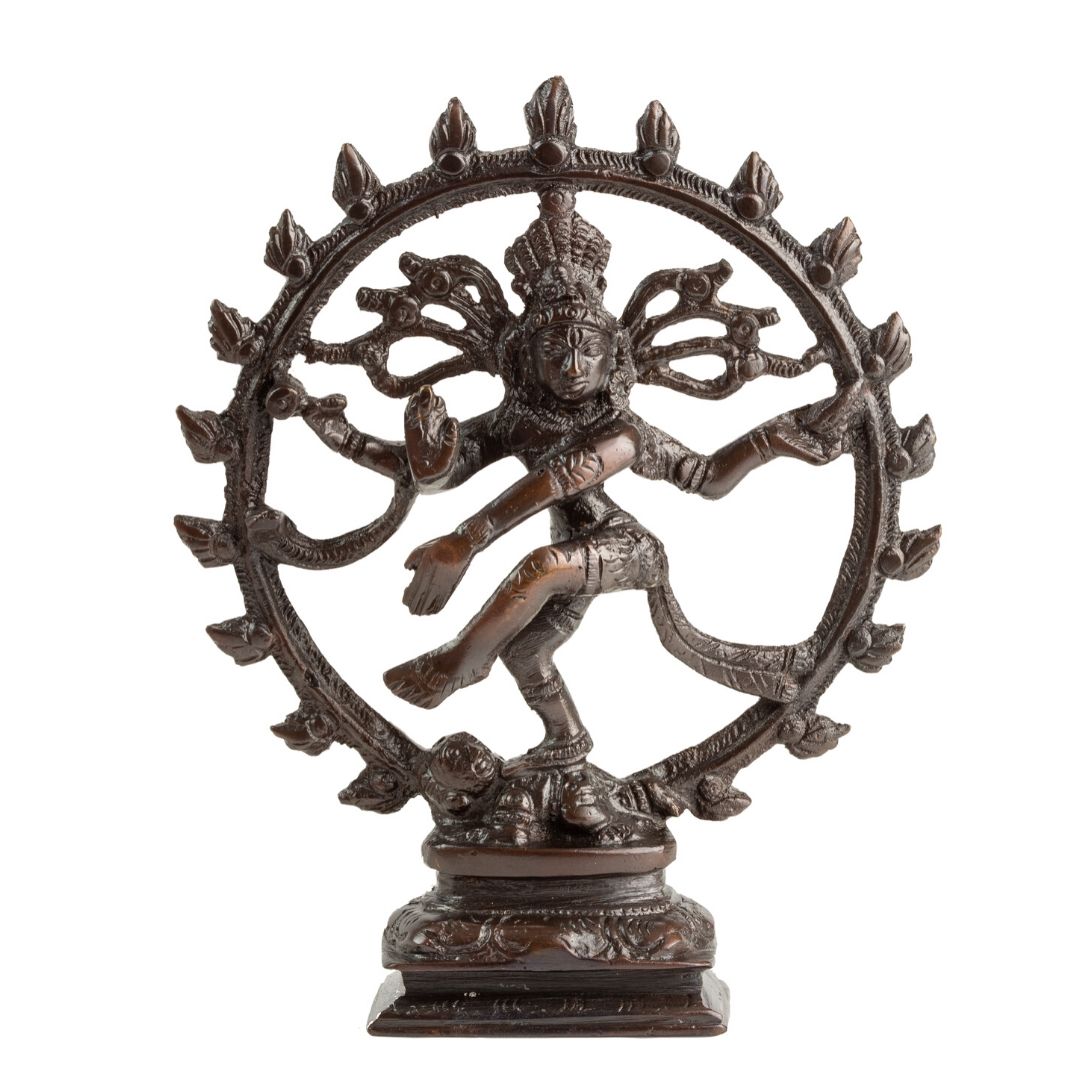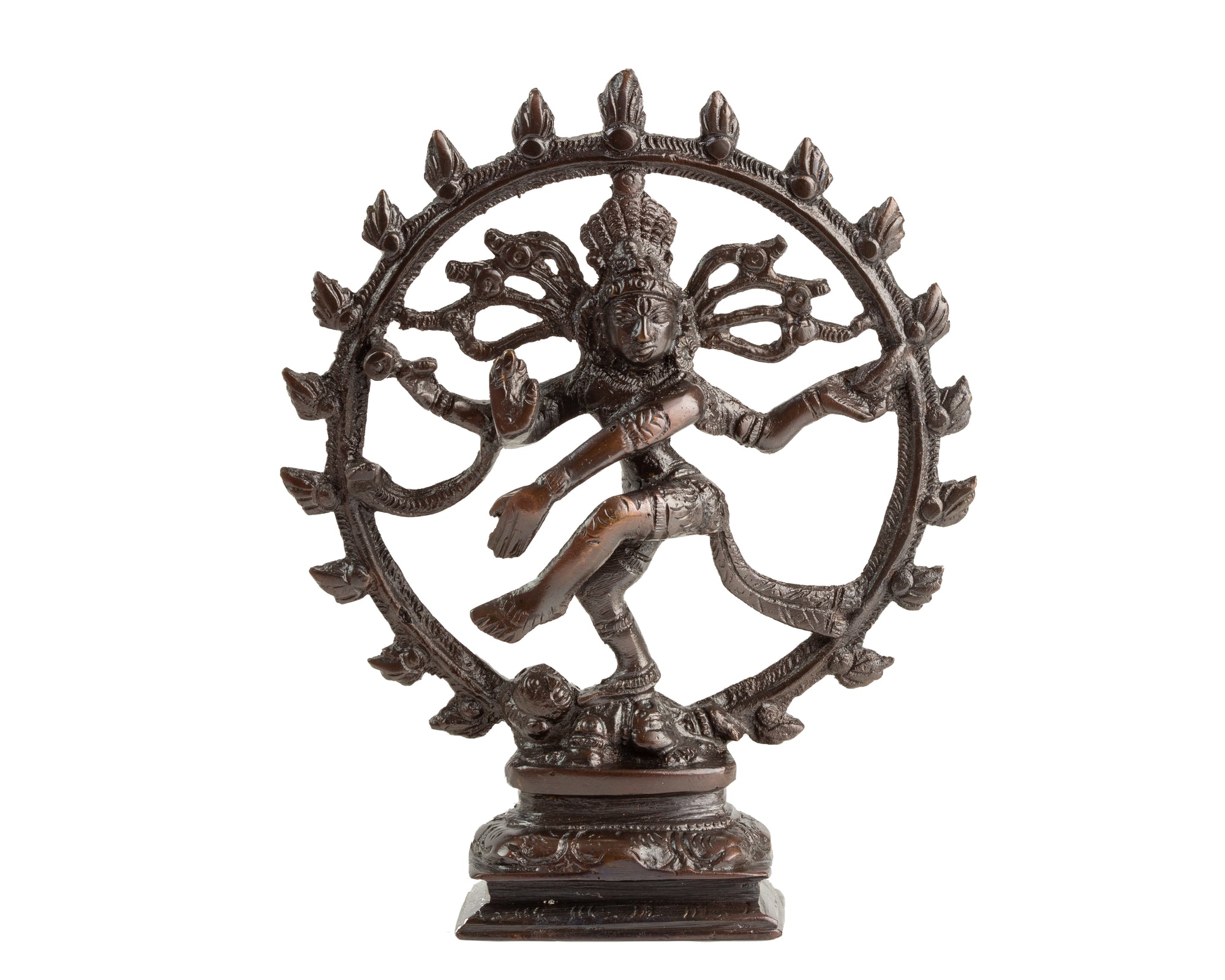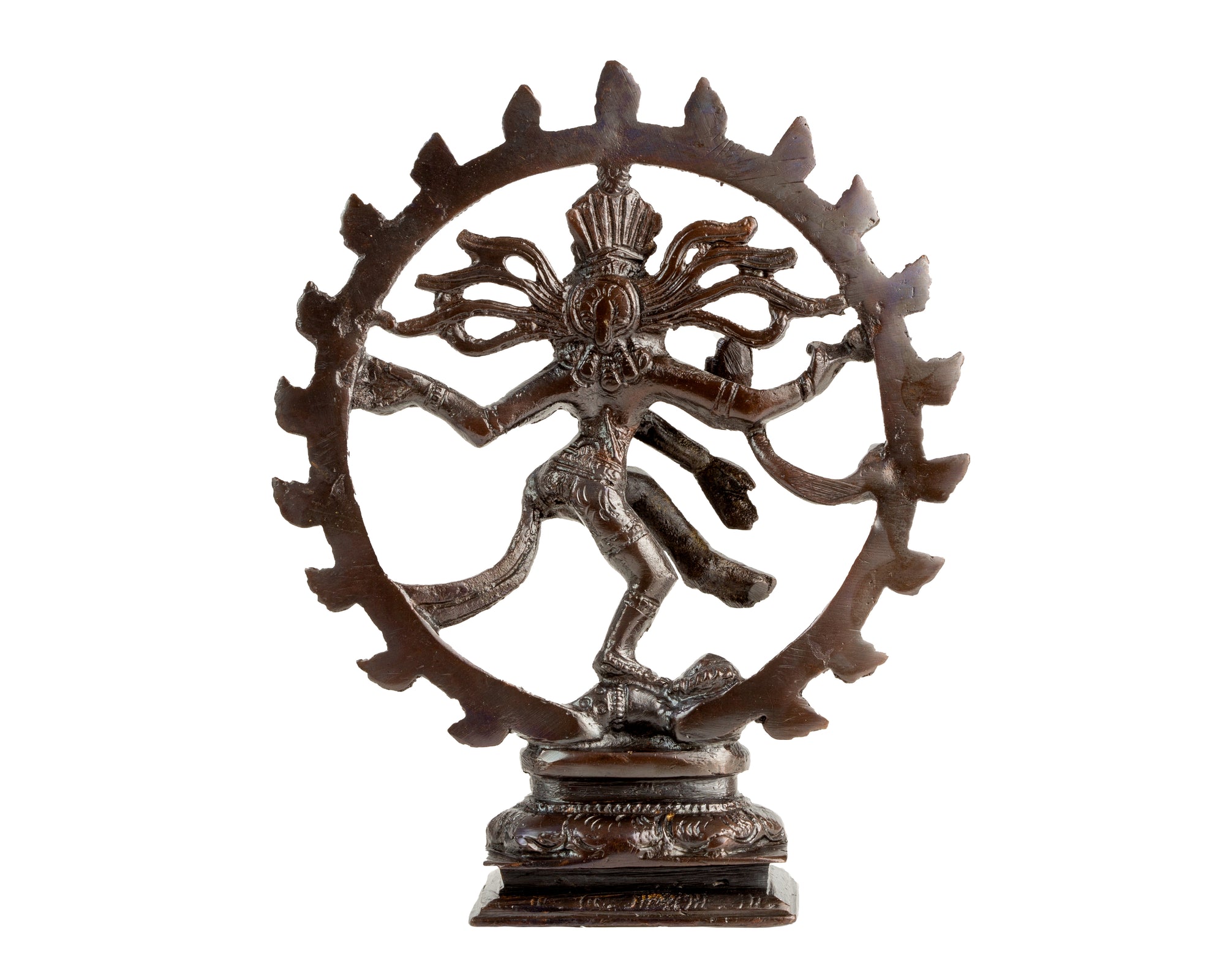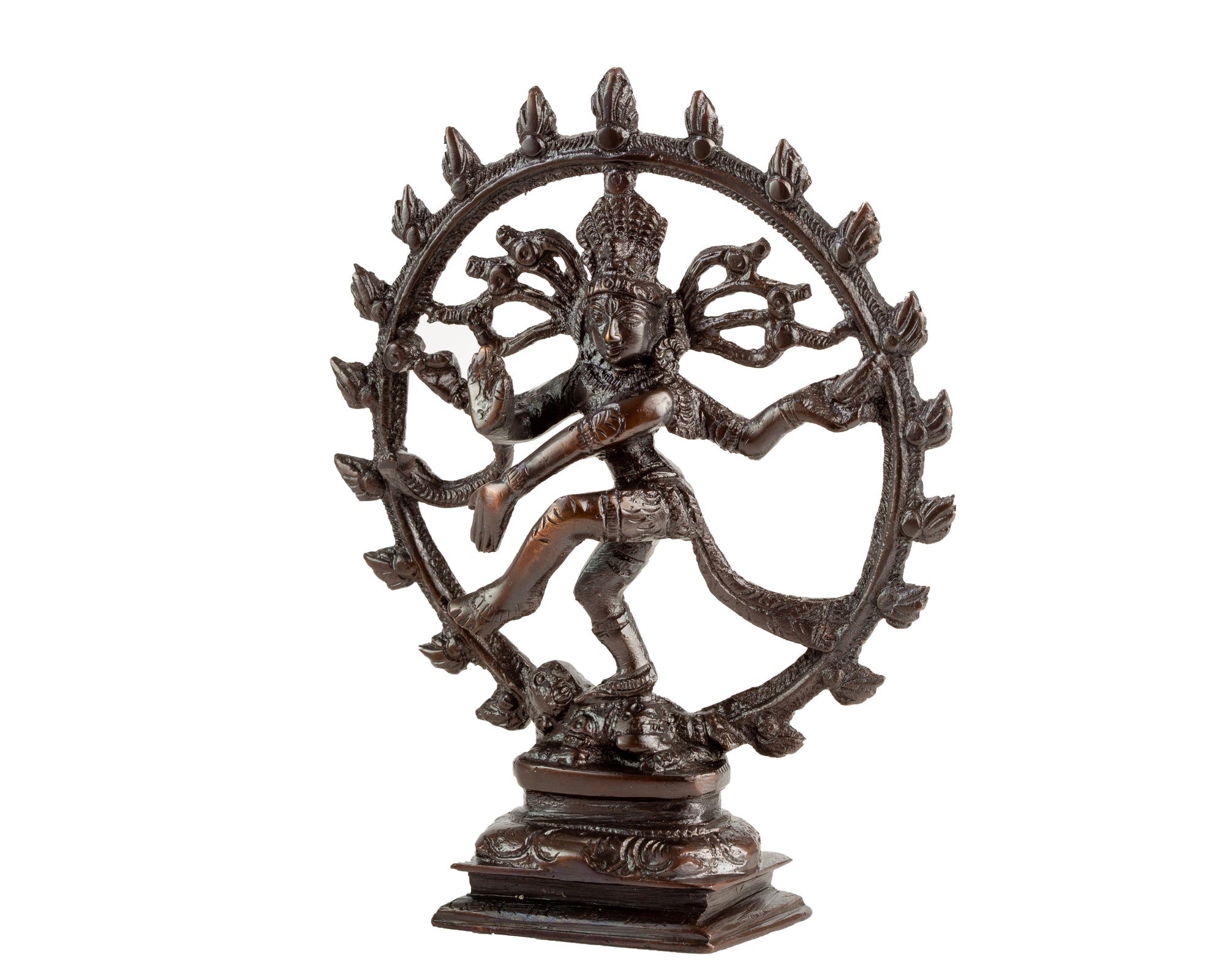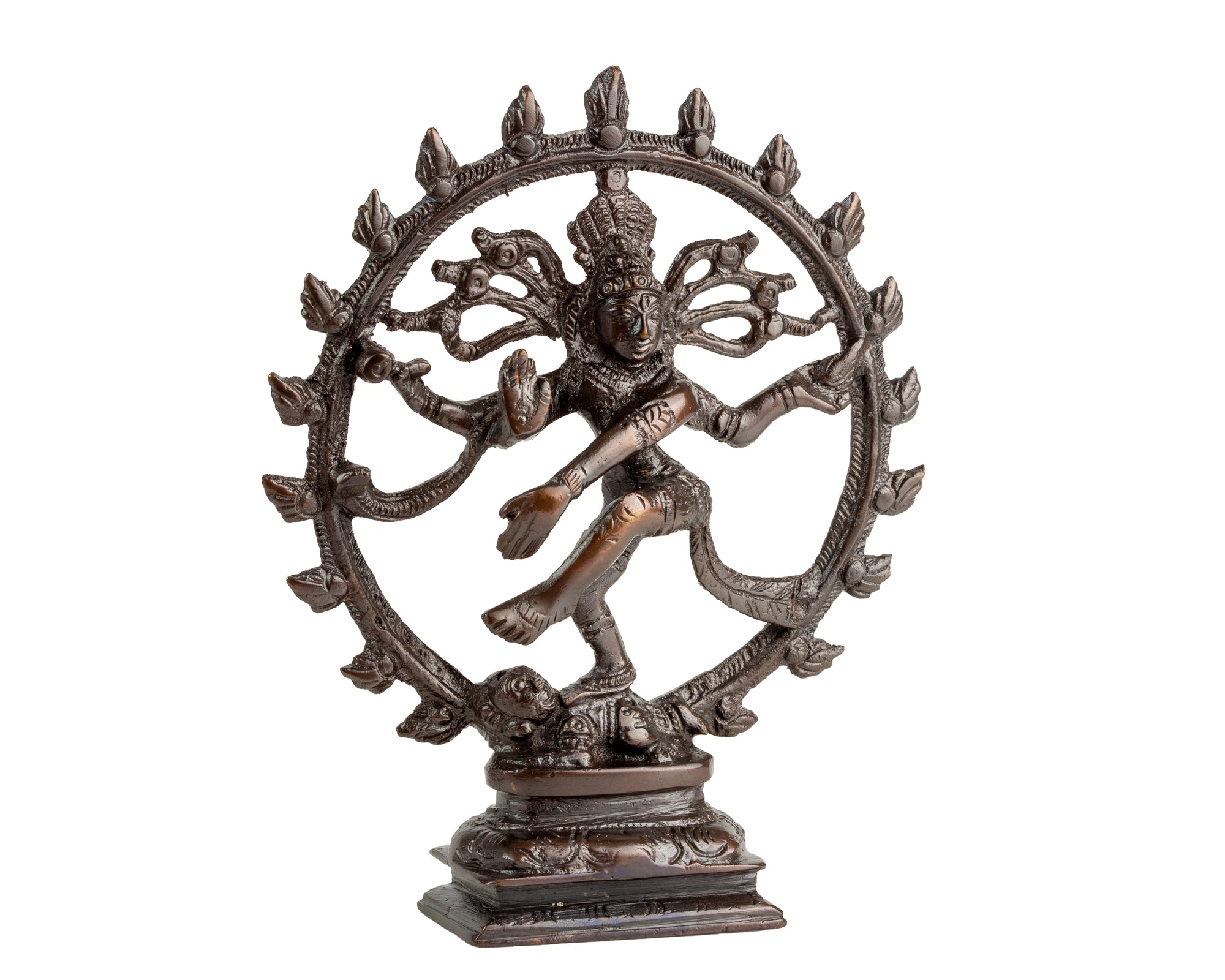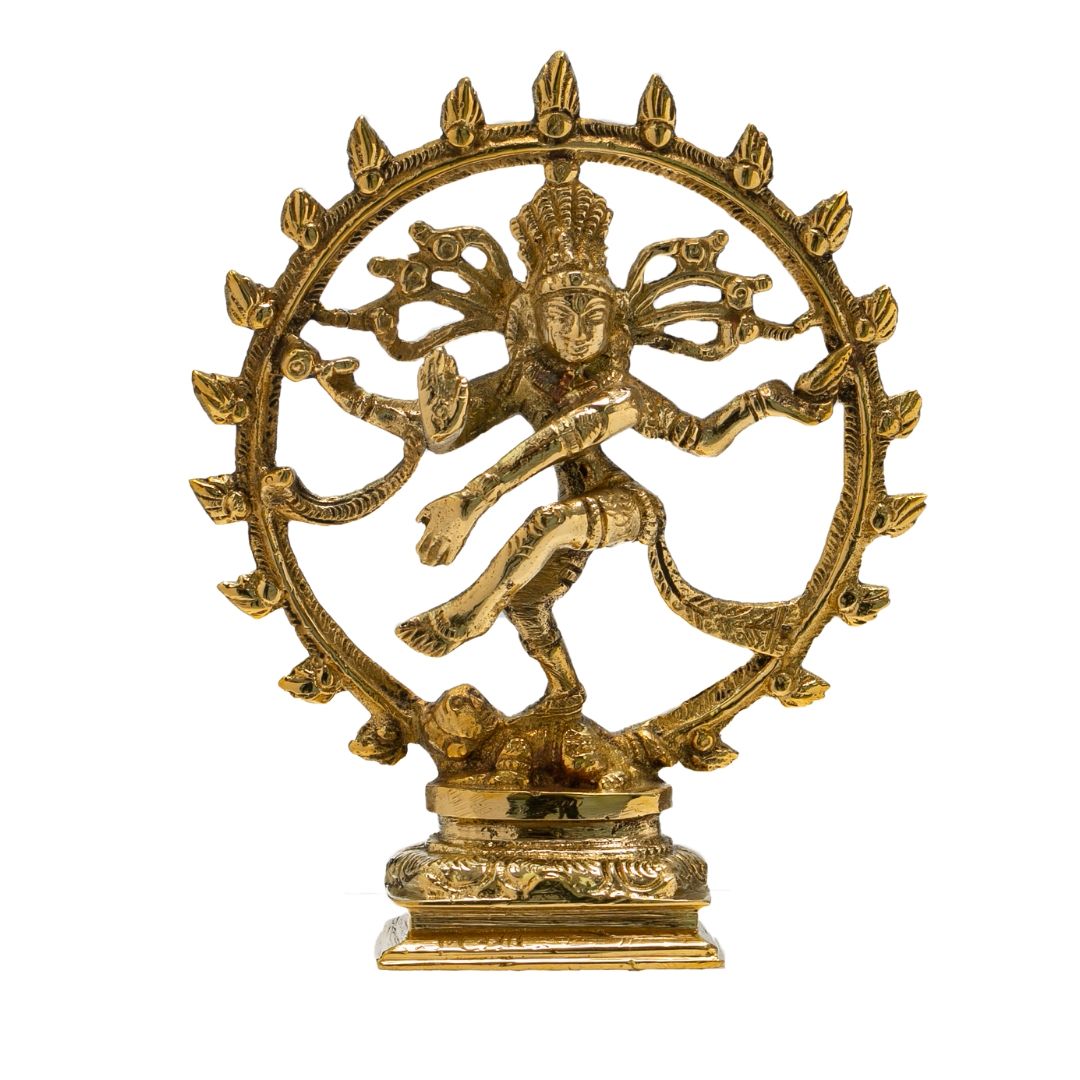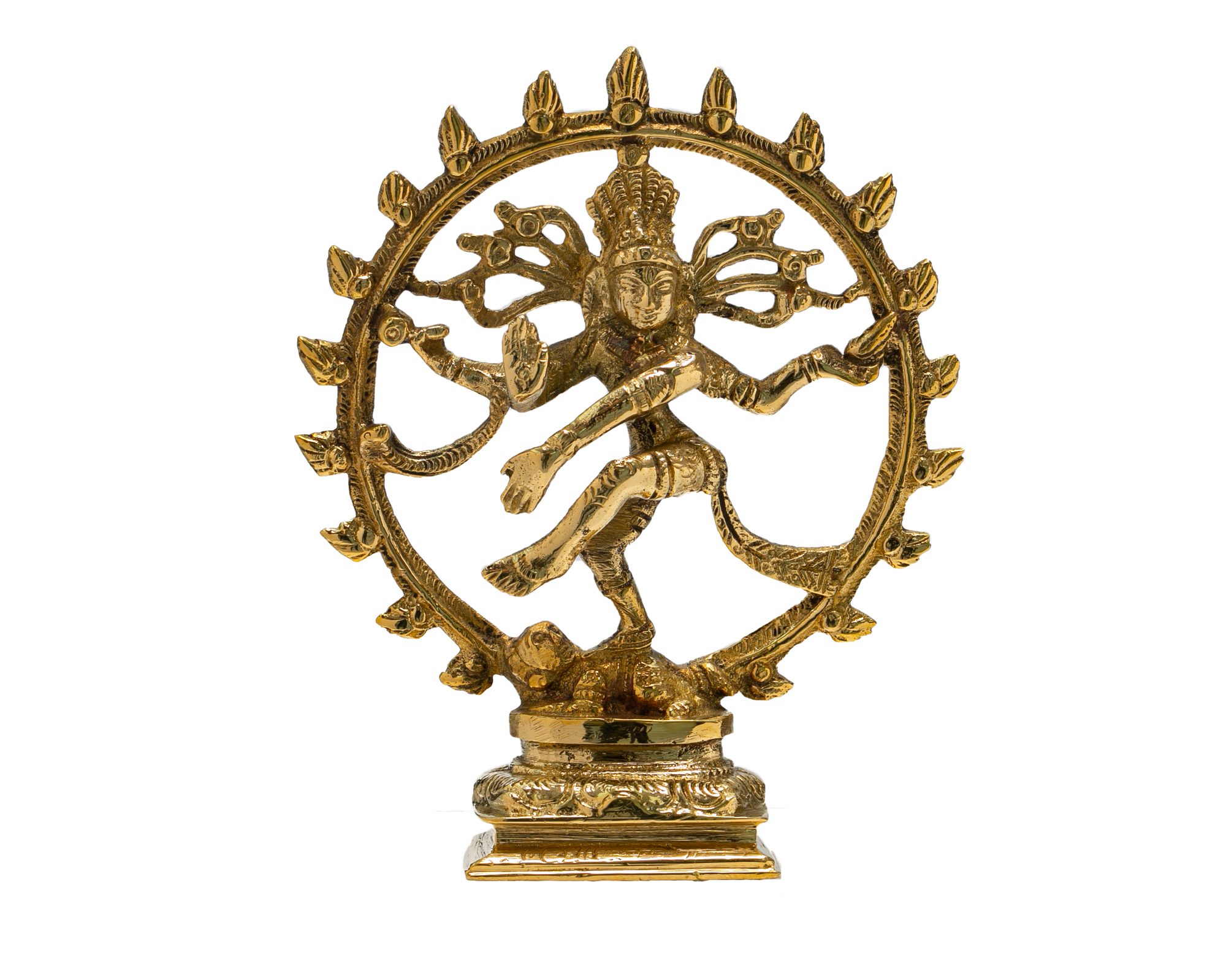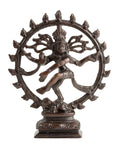
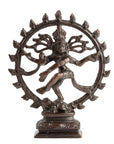
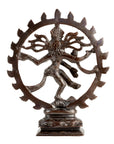
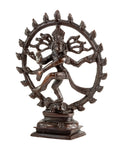
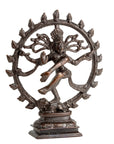
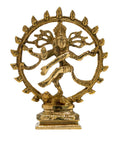

Shiva Nataraj Murti 6"
Shiva is the Hindu name for Universal Godhead, or divine creative energy. The dancing figure, encircled by a ring of fire depicts the cosmos coming into being, and reminds us that all create is a manifestation of the Shiva. The dance of Shiva is called Anandatandava and symbolizes Lord Shiva's role as creator, preserver and destroyer of the universe. When Lord Shiva takes the form of Nataraja he also conveys the Hindu conception of the never-ending cycle of time.
[split]
"Shiva's dance is set within a flaming halo. He holds in his upper right hand the Damaru (hand drum that made the first sounds of creation). His upper left hand holds Agni (the fire that will destroy the universe). With his lower right hand, he makes Abhayamudra (the gesture that allays fear). The dwarflike figure being trampled by his right foot represents Apasmara Purusha (illusion, which leads mankind astray). Shiva's front left hand, pointing to his raised left foot, signifies refuge for the troubled soul. The energy of his dance makes his hair fly to the sides. The symbols imply that, through belief in Shiva, his devotees can achieve salvation" (Met Museum, 2019).

